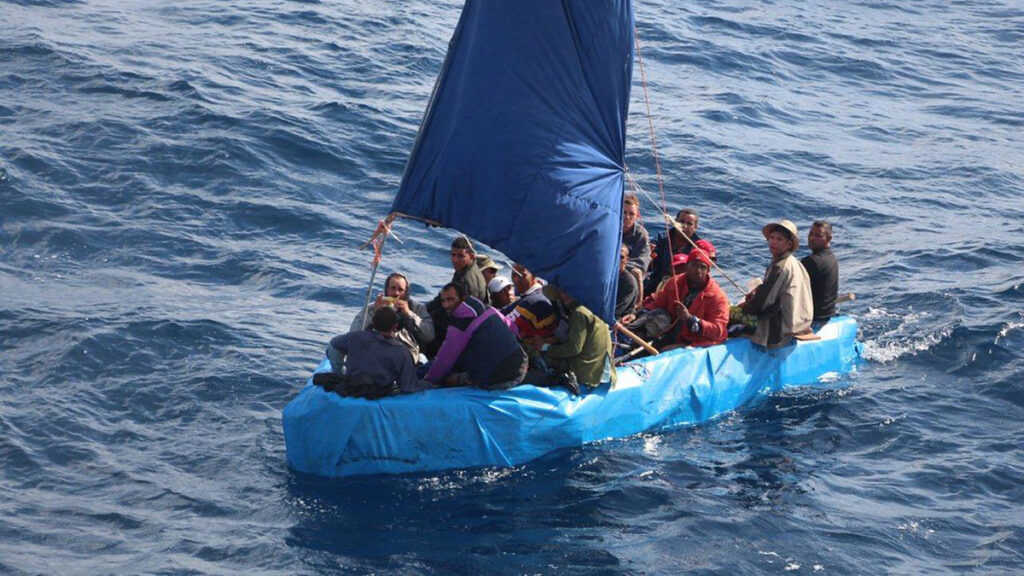The Florida Division of Emergency Management announced that since August 21, 2022, nearly 6,000 migrants attempting to enter the state illegally have been apprehended, and over 200 migrant vessels have been reported.
Abandoned migrant vessels that land on private property is not the property owner’s responsibility and will be removed by the state, free of charge.
The Division continues to work with the Florida National Guard, the Florida Fish and Wildlife Conservation Commission, the Florida Department of Law Enforcement, and the Florida Highway Patrol to increase coastal vigilance and provide improved situational awareness on migrant activities.
On August 21, 2022, the Homeland Security Task Force Southeast (HSTF-SE) transitioned from Phase 1a: Steady State and Surge – Preparation to Phase 1b: Steady State and Surge – Prevention in support of Operation Vigilant Sentry (OVS). The Florida Division of Emergency Management remains an active member of this Task Force to deter maritime migration and prevent loss of life at sea.
On January 6, 2023, Governor Ron DeSantis signed EO 23-03, declaring a State of Emergency in response to the surge in migration along Florida’s coastline.
State actions include:
Florida Division of Emergency Management (FDEM)
- FDEM is deploying teams to conduct initial assessments of the regulated disposal of boat vessels and coordinate state and national preparedness and response to foreign animal disease risks into the state.
- FDEM is leading the coordination of state assets for the mass migration response, including:
- Binoculars to assist unmanned aerial vehicle teams with spotting vessels, individuals and humanitarian efforts;
- Power resources to assist with power to command posts;
- Two pallets of bottled water and 250 Meals Ready-to-Eat (MREs) to be used by responding FWC Officers for distribution to affected migrants;
- Night vision goggles and forward-looking infrared units for FWC Officers to safely navigate and patrol waterways at night;
- A large vessel platform to assist FWC Officers in the detection of migrants at sea, search and rescues, long-distance travel and travel in inclement weather; and
- 100 personal floatation devices for use by FHP, FDLE and other state officials that are required to patrol FWC vessels. An additional 250 life jackets have also been deployed to safely outfit migrants that come under FWC custody and are in transport overseas.
Florida National Guard
- The Florida National Guard has 10 aircraft on mission and has conducted 338 flights for a total of 795 flight hours.
- The Florida National Guard has mobilized 100-150 National Guardsman to coordinate operational efforts with the U.S. Coast Guard and FWC aviation teams.
- The Florida National Guard will bolster FWC marine patrol to support water interdictions and ensure the safety of migrants attempting to reach Florida through the Florida Straits.
Florida Fish and Wildlife Conservation Commission (FWC)
- Currently, the FWC does not anticipate the need to institute any additional recreational boating restrictions in the region. Recreational boaters are cautioned to remain clear of any suspected migrant vessel and alert authorities to their location.
- If an abandoned vessel lands on private property, the property owner is not responsible for its removal. The state will remove these vessels free of charge. Report an abandoned vessel to the FWC at 888-404-3922.
- A fourth wave of 20 additional FWC officers and one mechanic has arrived to provide additional support throughout the Florida Keys.
- The FWC has tasked five large platform offshore patrol vessels in addition to maritime assets already in place in the Keys, including 40 officers and investigators and 35 vessels. Included in those assets are the 42′ vessel Fearless with three crew members and the 85′ vessel Gulf Sentry with six crew members. They are patrolling and assisting U.S. Border Patrol, U.S. Coast Guard and Customs and Border Protection with migrant landings.
- FWC Aviation is conducting routine flights in support of local, state, and federal partners and is coordinating with the U.S. Coast Guard, Florida National Guard, and FHP air assets.
- A base camp and command posts have been established in Marathon and Key West for FWC personnel.
Florida Department of Law Enforcement (FDLE)
- FDLE has nearly two dozen members deployed in Monroe County. A mobile command bus has been established with a workspace for those deployed.
- FDLE aviation assets are assisting with patrolling the waters.
- FDLE has partially activated the Florida Fusion Center and devoted intelligence analysts to assist with analytical reports.
- FDLE is coordinating Florida’s law enforcement response, similar to their active role in hurricanes, and is in contact with state and local partners to ensure they have the resources needed to manage the current mass migration situation.
- As migrants are more at risk of human trafficking and other crimes, FDLE is helping to gather and provide intelligence and conducting investigations and assisting as requested by federal, state and local partners.
- FDLE agents are conducting interviews and gathering intelligence in conjunction with U.S. Customs and Border Patrol and Homeland Security Investigations.
Florida Highway Patrol (FHP)
- FHP has deployed 31 troopers, six unmanned aerial vehicles (UAVs) with drone pilots, two fixed-wing aircraft with downlink capabilities and one mobile command bus in support of ongoing operations.
